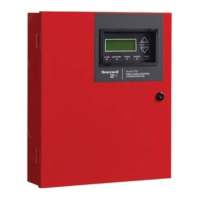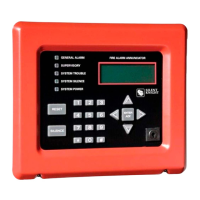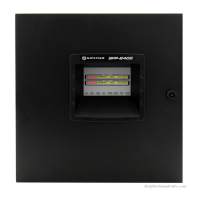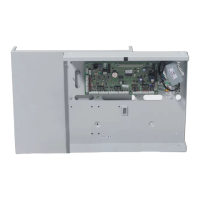6700 Manual — P/N LS10148-001SK-E:F 8/29/2022 9
Section 1: Introduction
The 6700Fire Alarm Control / Communicator is an Addressable Fire Alarm Control System that meets the requirements of UL 864 10th Edi-
tion Standard.
1.1 Basic System Overview
1.1.1 Hardware Features
• The 6700 has one built in signaling line circuit (SLC) that supports 50 SK detectors and 50 SK modules or 50 SD devices.
• The 6700 is capable of outputting 2.5A of output power during an alarm activation through 2 sets of terminals for the notification
appliance circuits or an auxiliary application. Each circuit is power-limited and can source up to 2.5A during an alarm activation. The
constant auxiliary power load must not exceed 1A for normal standby.
• Built-in dual phone line, digital alarm communicator/transmitter (DACT), IP, or optional cellular technologies.
• Reports events to central station by point or by zone.
• UL Listed for pre-action and deluge releasing systems.
• Two general purpose Form C programmable relays.
• One Form C Trouble Relay.
• Basic system operation can be performed from the onboard, or any remote annunciator.
• Up to 20 user profiles can be programmed, each having custom Access Code, and Main Menu items.
• Can be used with any combination of up to 8 Model 5860, 6860 or 6855 Remote LCD Annunciators (sold separately).
• Can be used with model 5865-3, 5865-4, and 5880 in any combination for a total of eight devices on one control panel. See Section 4.11
and Section 4.12 for additional information on these models.
• Printing of event log available through the Model 5824 serial/parallel printer interface module.
• 125 software zones, 125 Output Groups.
• Add four Notification/Auxiliary power circuits with each 5496 NAC Expander. See note below.
1.1.2 Common Communication / Annunciation Link System Hardware Features
The common communications and annunciation link allows up to 17 of the 6700, 6808, 6820, and 6820EVS panels to be connected via cop-
per or fiber optic cable so that a designated panel is the communicator for all panels in the link. This is not a true peer-to-peer network and
will not perform like one.
• The default Common communications link setup can contain up to 17- 6700 panels connected.
• Common communications link support for up to 17 Sites.
• Each building is referred to as a “site”.
• Panels can be interconnected using CLASS B or CLASS A topology.
• Use the SK-NIC Network Interface Card as a common communications link. Copper wire or fiber-optic cable panel connectivity can be
used within the same linked System.
• The common communication and annunciation architecture allows a designated panel to be the communicator for all the panels in the
link.
1.1.3 Software Features
• Advanced smoke detector features:
– Automatic drift compensation
– Maintenance alert region
– Point status meets calibrated smoke test requirements for NFPA 72
• “JumpStart” feature for easy programming
• Non-volatile event history stores 1000 events
• A choice of output patterns available for notification outputs, including Temp 4 along with ANSI 3.41 temporal signal
• Built-in synchronization appliance support for AMSECO, Gentex, Wheelock, or System Sensor
NOTE: Total output power for both circuits must not exceed 2.5A in alarm condition, and total output power for both circuits must not exceed
1.0A for all other activation conditions (i.e. Supervisory, Trouble, etc.).
NOTE: The system can support a maximum of eight intelligent power modules, either the 5895XL or 5496, in any combination.

